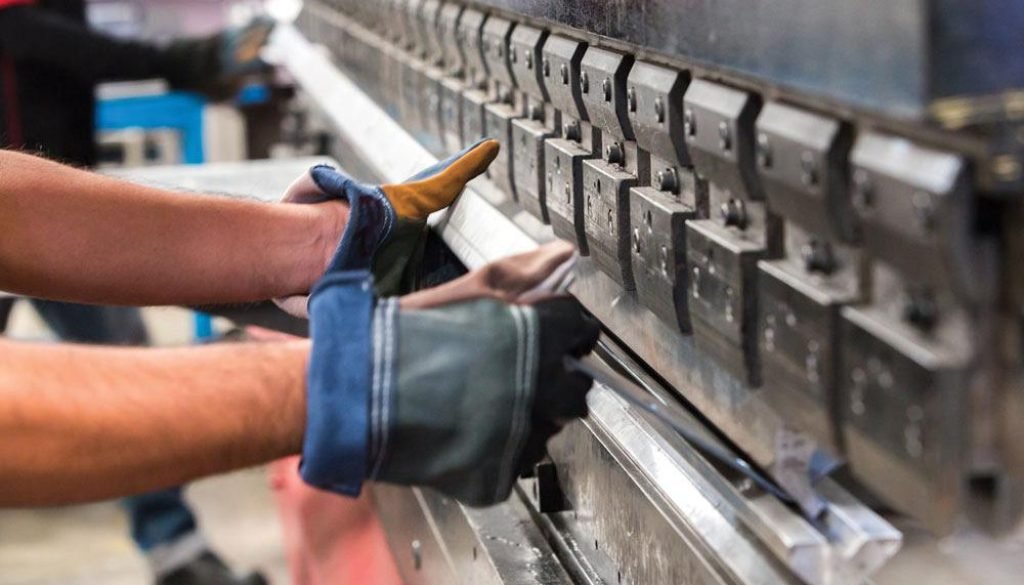Guide to Metal Bending Brakes: 7 Key Steps
Whether you’re a seasoned metalworker or just getting started, having a good grasp of metal bending brakes is essential. These versatile tools enable you to bend metal precisely and consistently, opening up a world of possibilities for your projects. 7 key steps for using metal bending brakes effectively. The role of a planishing hammer in achieving professional-level results.
Step 1: Safety First
Safety should always be your top priority when working with metal-bending brakes. Before you begin any project, ensure you’re equipped with the necessary personal protective equipment (PPE). Safety glasses protect your eyes from flying debris, while sturdy gloves shield your hands from sharp edges and potential metal splinters. If you’re working with certain metals that produce harmful fumes when heated, ensure that you’re in a well-ventilated area or wear a respirator.
Reading and understanding the user manual accompanying your specific metal bending brake is also crucial. Familiarize yourself with its features, functions, and any safety precautions the manufacturer recommends.
Step 2: Choose the Right Metal Brake
Selecting the right metal brake is essential for the success of your project. Consider the thickness and type of metal you’re working with and the complexity of the bends you need to create.
A benchtop metal bending brake is a suitable choice for smaller projects or thinner metals. These are typically more compact and portable, making them convenient for hobbyists and DIY enthusiasts. On the other hand, if you’re tackling larger projects or dealing with thicker metals, a floor-mounted metal brake provides the stability and strength needed for precision bending.
Step 3: Measure and Mark
Accurate measurements are the foundation of successful metal bending. Use a ruler or measuring tape to mark the metal sheet precisely where the bend occurs. Use a scribe or a fine-tipped marker to create clear guidelines on the metal’s surface for the best results. These guidelines will serve as reference points to ensure your bends are accurate and consistent.
Step 4: Set Up the Metal Brake
Properly setting up your metal bending brake is critical for achieving the desired bend angles. Start by adjusting the clamping and bending fingers to match the measurements you marked on the metal sheet. Ensure that the clamping mechanism securely holds the metal sheet in place before you start bending. A loose or improperly secured sheet can lead to bending inaccuracies and a less-than-desirable outcome.
Step 5: Make the Bend
With your metal sheet securely positioned between the clamping and bending fingers of the metal brake, you’re ready to make the bend. Apply even pressure to the metal using the machine’s handles or levers. It’s crucial to maintain a steady and controlled motion during this step. Avoid applying excessive force, as it can result in over-bending or damage to the metal.
Step 6: Check and Adjust
Take a close look at the angle and quality of the bend. Carefully inspect the work to ensure it matches your desired specifications. If adjustments are necessary, make them gradually and systematically. Repeat the bending process, if needed, until you achieve the precise bend angle and quality you’re aiming for. This step requires patience and attention to detail.
Step 7: Finish with a Planishing Hammer
A planishing hammer comes into play to refine and smoothen the surface of the bent metal. This versatile tool is designed to eliminate imperfections and create a professional finish. Gently tap the surface of the metal with the planishing hammer, focusing on areas where there may be irregularities or small dents. The planishing hammer’s controlled blows will help achieve a smoother, more uniform appearance on the bent metal.
Conclusion
Mastering the art of metal bending with a metal bending brake requires a combination of precision, patience, and the right equipment. Safety should always be your first consideration, followed by selecting the appropriate metal brake for your project. Accurate measurements, careful setup, controlled bending, and thorough inspection are key to success.
Regarding metalworking tools and equipment, Eastwood is a trusted source. They offer a wide range of high-quality products to support your creative endeavors, including metal bending brakes, planishing hammers, and more. Visit their website to explore their extensive selection and take your metalworking projects to the next level. With the right tools and knowledge, you can confidently bend and craft metal, turning your creative ideas into remarkable realities. Your imagination is the only limit.



